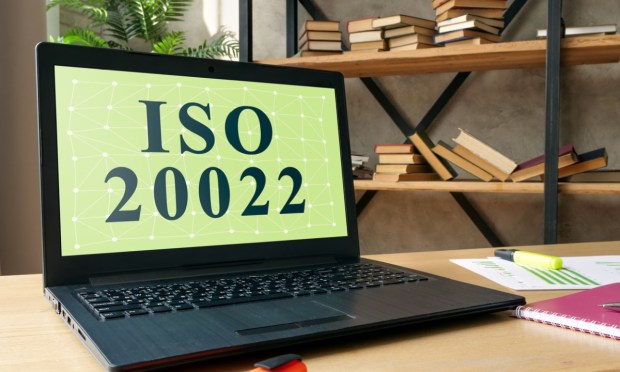ISO 20022 Can Help Solve X-Border ‘Failed Payments’ Frictions, But Challenges Remain

The farther payments travel, the greater the potential is for failure.
Cross-border transactions, as they wend their way across currencies and time zones, with any number of parties and counterparties in the mix, are rife with complexities.
Streamlined, standardized messaging, at least conceptually, aids straight-through processing by eliminating many of the manual steps that go on behind the scenes that can otherwise hinder the speed of reconciliation.
And as has been widely reported, the adoption of ISO 20022, a standard for communications between financial institutions, is making and will make significant headway in standardizing the interactions between FIs.
But the maximum efficiencies can only be realized when everyone’s on board, at the same time, and implements the same standard. As it stands now, the rollout is staggered, delayed, and depending on where you look, readiness is not all it could be.
Pain Points Ripe for Attention
The need to address cross-border pain points remains considerable. As PYMNTS Intelligence has reported, 70% of U.S. firms experienced higher rates of failed payments in cross-border sales compared to domestic sales, per PYMNTS Intelligence research — and domestic sales failures already account for $89 billion as measured solely through the first three quarters of last year.
The harmonization of exchanging electronic messages between FIs has not been, well, harmonious. The standard itself was published by the ISO (the International Organization for Standardization) about two decades ago, and yet the goal for a migration by all banks to shift to the standards has been staggered and, in some cases, outright delayed. In some countries and regions, the pivot to ISO 20022, supplanting previously-sed formats, has been underway. By way of example, the Bank of England said last year it had migrated at least several aspects of its Real Time Gross Settlement System and CHAPs to the standard. India and Japan had also been relatively early adopters of ISO 20022. The new FedNow® Service, as we’ve noted, and had been announced as it went live over the summer of 2023, said it would use ISO 20022.
In an interview with Karen Webster, panelists from the financial services industry detailed that banks have been taking a scaled approach to sending data so that it can be validated to ensure that straight-through processing works and back office reconciliation improves and that there remains roughly two years to go until the transitions are, on a bank-by-bank basis, complete.
The aforementioned announcements and adoption are promising, but ISO 20022 had been planned to see a global rollout at the end of 2022. CHIPs has pushed its own implementation to April of this year, when the deadline had been November of last year. SWIFT has a 2025 timeframe for retiring several categories of messages, though there’s a period of “co-existence” between legacy and ISO 20022 formats until then. But the real benefits may not be realized until even later. The Bank of International Settlements said in an October 2023 report that “the current inconsistency in the implementation and use of this international standard risks undercutting some of its benefits for cross-border payments,” and added that “Realization of the benefits of adopting these requirements will depend crucially on their widespread uptake. As such, market participants are encouraged to begin preparations to align with the harmonized ISO 20022 data requirements in earnest and by end-2027 at the latest.”
